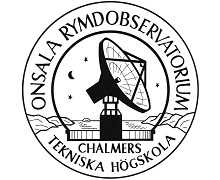About the project
The Atacama Large Millimeter/sub-millimeter Array (ALMA) offers diagnostic possibilities for the study of our Sun, which have not been available before. In particular, ALMA's ability to serve as an essentially linear thermometer of the atmospheric gas at unprecedented spatial resolution in this wavelength range has great diagnostic potential. Consequently, solar ALMA observations will contribute significantly to answering long-standing questions about the structure, dynamics and energy balance of the outer layers of the solar atmosphere and thus promise high-impact results.
In contrast to many other astronomical sources, the Sun is observed as a spatially extended on the sky. ALMA observes a rather small region on the sky, much smaller than the Sun. Consequently, the whole region observed by ALMA (the so-called primary beam) is filled with a complex radiation pattern that involves a large range of spatial scales and evolves on extremely short time scales of only seconds and even below. Fully exploiting ALMA's possibilities therefore requires imaging at very high cadence.
Objectives
Aim of the development study "High-cadence imaging of the Sun" is to investigate and develop a high-cadence imaging capability for ALMA, resulting in improved quality of observational data and new scientific applications.
Competences and tools
The ESO-funded ALMA Development Study “High-cadence imaging of the Sun” employs realistic test cases based on state-of-the-art numerical simulations, the Solar ALMA Simulator tool, and a solar simulation pipeline.
The simulator tool will allow to investigate the influence of different instrumental effects and set-ups on the final reconstructed observations. Comparisons between the input and output of the simulation pipeline will then reveal how well imaging at high cadence performs.
Outcomes
The main study result is the evaluation of the potential performance of this new capability and recommendations for observing and post-processing strategies. The project report can be accessed on the ESO development study webpage.
Project period
Start - finish: 2018 - March 2023
Financing
This project is financed by the ESO within the ALMA Development Study program based in Onsala Space Observatory.
Cooperation
The study is led by Sven Wedemeyer (UiO) but hosted and administrated by the Nordic ALMA Regional Centre (ARC) node at Onsala Space Observatory, Sweden, since Norway is not a member of ESO. The solar ALMA team at UiO is closely collaborating with the Nordic ARC node, ESO and Stockholm University. The activities at UiO are part of the Rosseland Centre for Solar Physics (RoCS).



